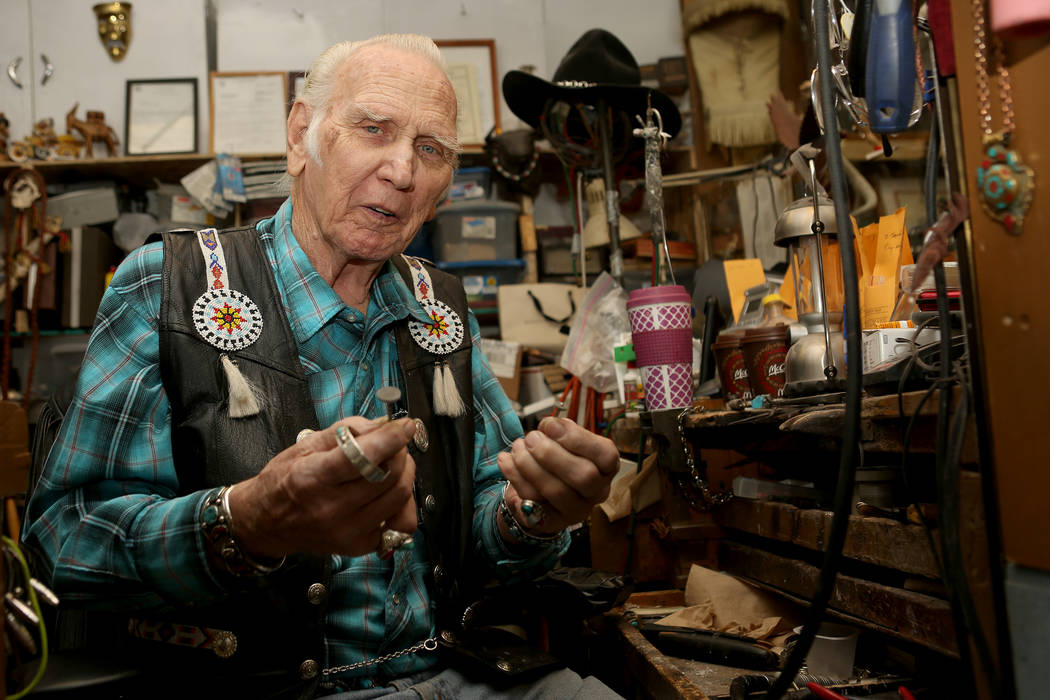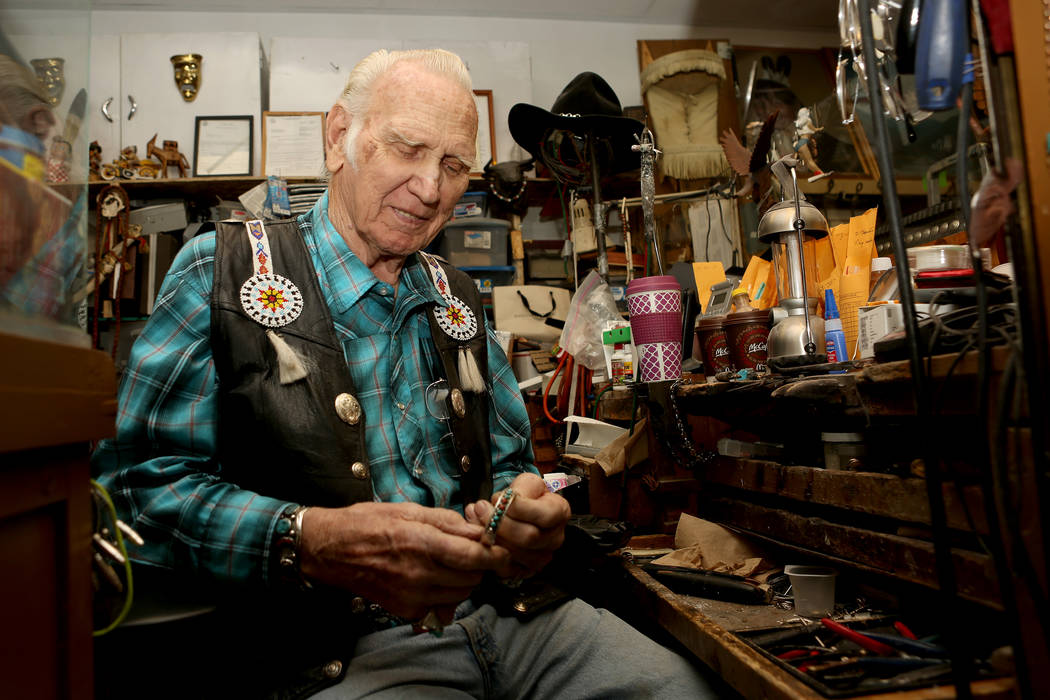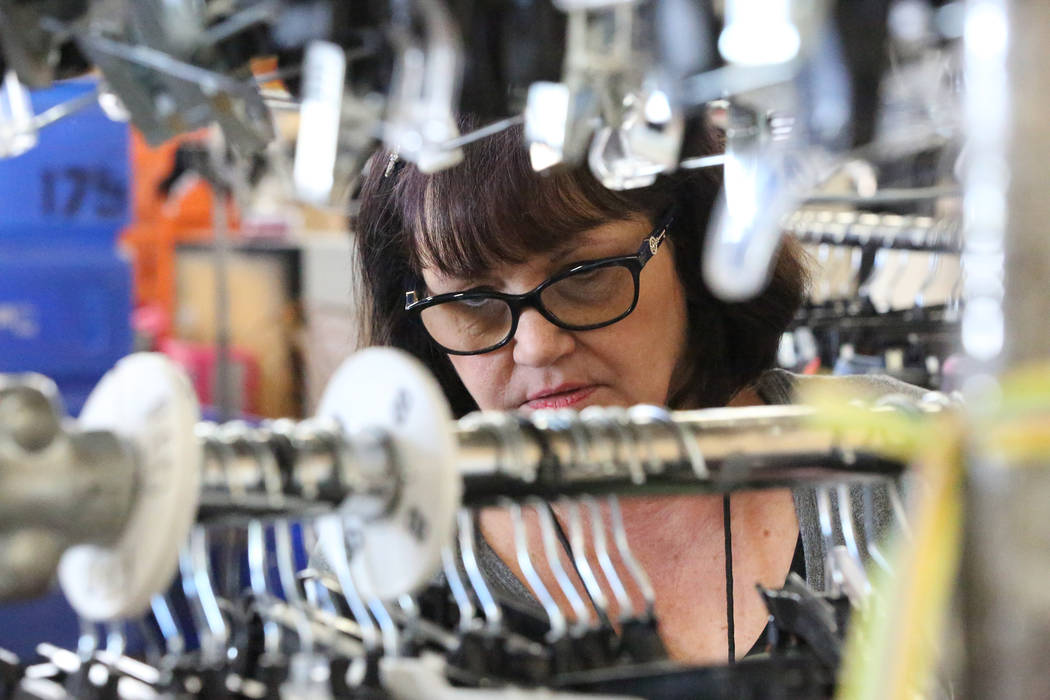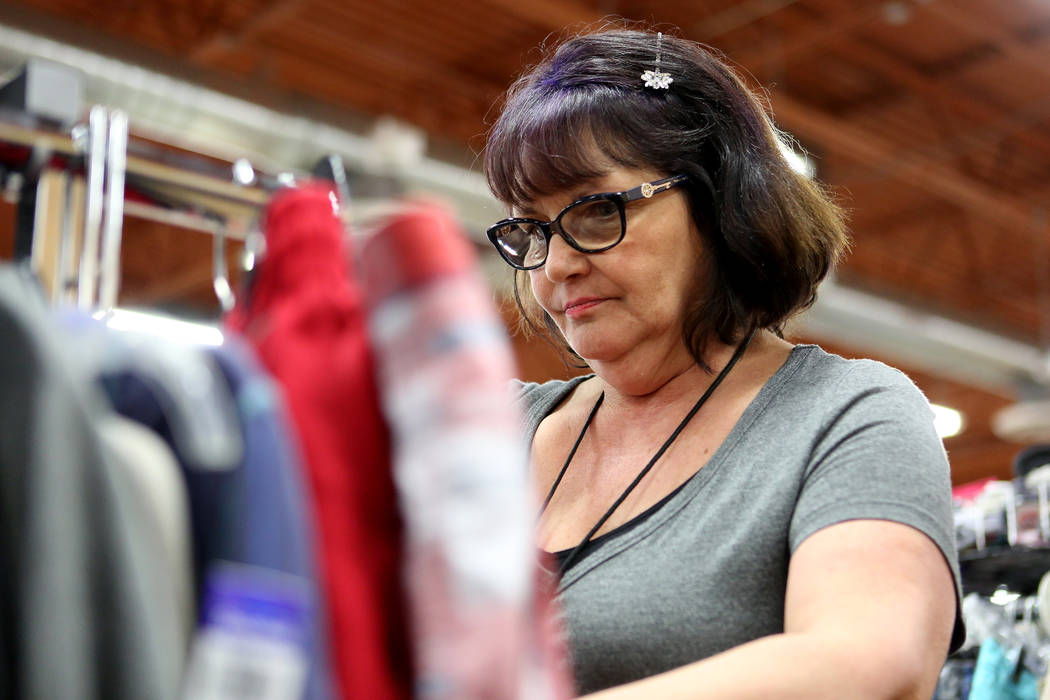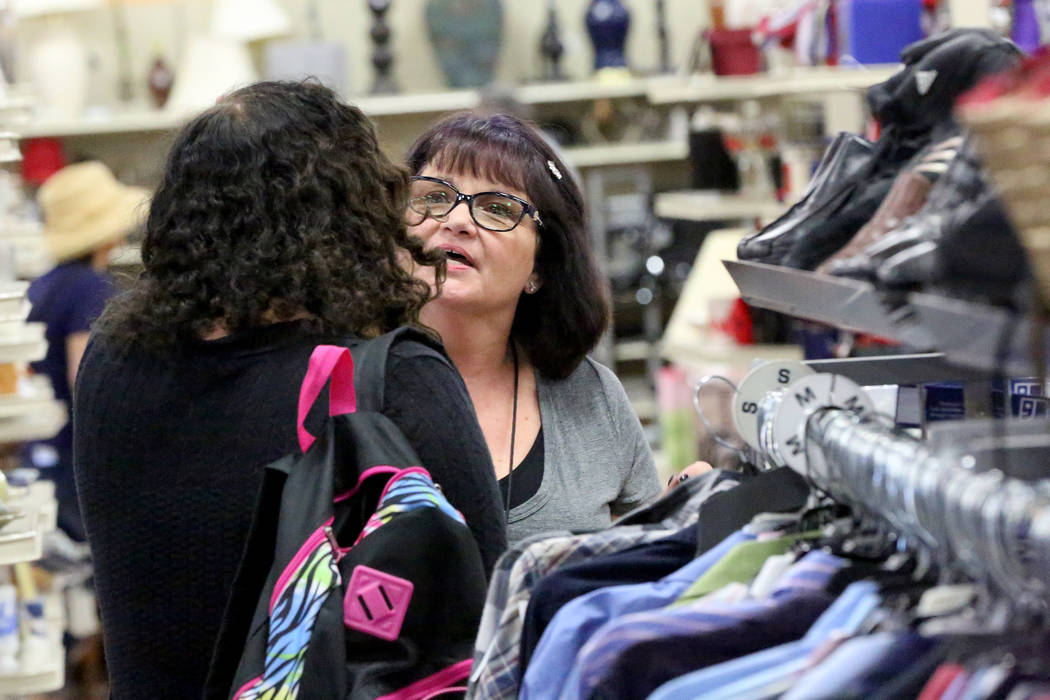More local seniors looking for work as teen workforce declines
Rob Kennedy has made and sold jewelry in the Las Vegas valley for about 50 years. At age 80, he refuses to retire or sell his business, though he’s received at least three offers over the years.
“When I die, I’ll be right here,” he said, referring to his store, A Traders Turquoise Chief, at the corner of Charleston Boulevard and 10th Street.
Kennedy, who said he is half Navajo, is glad to have his business. But other Nevadans his age are less fortunate. Data from the Bureau of Labor Statistics shows that people in the Silver State who are 65 and older have both employment and unemployment rates above the national average.
The data speaks to a national trend: The rate of seniors working or looking for work has steadily risen over the years. By contrast, the rate of teens working or looking for work — a measurement economists call participation in the labor force — has declined.
Nevada’s numbers
Between 2005 and 2009, Nevada saw a surge in the number of people 65 and older who were working or looking for work.
The employment rate during that time was at least 1.9 percentage points above the national rate for that group of people, according to federal data.
The rate of these seniors working or looking for work reached 18.9 percent in 2015 for both Nevada and the nation. That is a 33 percent increase over the Nevada rate in 2002 and a 43 percent increase over the national rate in 2002.
The percent increases experienced by the state and the nation from 2002 to 2015 are about the same when looking at the rate of seniors 65 and older employed in Nevada and the nation.
The gap between the Nevada unemployment rate for people 65 and older and the national unemployment rate for those people has widened since the latest recession, which ended in 2009.
Since 2009, the Nevada unemployment rate for seniors 65 and older has been at least 3.5 percentage points above the national rate for those people.
The highest that gap got between 2002 and 2007 was 3 percentage points.
The state rates compared to the national rates are not dramatic enough to suggest a problem, said John Restrepo, an economist with RCG Economics.
Hiring prospects for seniors can be hurt by casinos and the hospitality sector favoring younger employees. During the recession, seniors may have taken away the low-experience jobs teens typically go for, but over time more seniors may leave the labor force as savings are recovered.
“We may also see a recovering participation rate for teenagers,” Restrepo said.
Seniors push out teens?
The unemployment rate among Nevada teens 16 to 19 has also been above the national rate for the same group since 2009.
The gap between the Nevada unemployment rate for teens and national rate for the same group has ranged between 1.6 and 7.5 percentage points.
The rate of teens working or looking for work has declined overall in the state and the nation.
Taking a nationwide, 38-year look at teens who work and look for work, Teresa Morisi, branch chief for the Office of Occupational Statistics and Employment Projections within the Bureau of Labor Statistics, found that the U.S. rate peaked at 57.9 percent in 1979.
The participation rate fell to 52 percent in 2000, then hit 34.1 percent in 2011 and is projected to fall to 26.4 percent nationwide in 2024.
The employment rate among teens from 2002 to 2015 hit a high of 41 percent in 2005 and a low of 24 percent in 2013. The overall change is a 41 percent decrease.
Some reasons for the decreased rate among teens include earlier start dates for school, harder classes and parents discouraging work in favor of schooling, according to research Morisi published in February.
Nevada’s participation rate among teens has been volatile. State employment data can be less reliable than national data because of the smaller pool of people analyzed, said Jeff Waddoups, a professor and the chairman of the Lee Business School at UNLV.
Since 2002, the teen participation rate hit a high of 47.7 percent in 2005 and a low of 32.6 percent in 2014. With increases and decreases in the rate between those two years, the overall change is 32 percent.
The rate of people 55 and older working or looking for work surpassed the rate for teens in 2009, according to Morisi’s research. By 2015, the number of employed people 55 and older was about seven times that of employed teens 16 to 19.
The recession led to an increased rate of seniors working or looking for work to supplement their fixed income, AARP spokesman Scott Gulbransen said.
Seniors may also return to work if they are so used to that schedule and prefer that to a retiree’s schedule, he said.
Through the Senior Community Service Employment Program aimed at low-income and unemployed people 55 and older, groups like AARP match job seekers to nonprofits and public agencies that will help seniors build skills and make money.
The local office has about 11 staffers to help seniors, Gulbransen said.
Workforce programs
The federal government has mandated workforce programs be carried out at the local level.
About $11.85 million in federal money made its way to 10 organizations that help young people with their careers and seven that help adult and dislocated workers, according to a July statement from Southern Nevada’s workforce development board, which oversaw the local payouts.
Goodwill of Southern Nevada is one of the organizations that receives this federal money, which helped provide training to Chris Palacios.
For the 18-year-old, graduating high school proved a miracle. He balanced school work with taking care of his father, diagnosed with multiple sclerosis the year before.
“What can I do?” Palacios recalled asking his father.
“You are so young, don’t get stressed out,” came the reply.
He was selected to join Goodwill’s workforce program for youth and received training in heating, ventilation and air conditioning. He is now looking for on-the-job training. His age and lack of a car hold him back from jumping into a career.
He is one of about 80 youth members of Goodwill’s training program. The nonprofit hopes to enroll 130 people before July, said Brian Fukuzawa, career coach at Goodwill’s One-Stop Affiliate East.
Without the program providing guidance, Palacios said, he’s afraid he might be homeless.
“I’m so grateful,” Palacios said. “They are my angels.”
In addition to the federally funded program, Goodwill has career services funded by sales from the nonprofit’s retail stores.
It’s those retail sales that helped Irma Cruz, 70. She had worked a series of temp jobs but wanted full-time work. Cruz had moved to Las Vegas from California in November to be closer to her daughter. She remembered seeing plenty of seniors at work during a brief stint as a casino cashier, and she thought she’d have an easy time getting a job in the valley. She was wrong.
“That was a rude awakening,” she said.
Goodwill representatives helped Cruz write a resume and look for work. She worked some temporary jobs but wanted more money to pay for a new car, see movies and eat out.
Cruz now sorts through clothes in the donation area of a Henderson Goodwill location.
Of Goodwill of Southern Nevada’s nearly 1,000 employees, about 3 percent are 65 and older, spokeswoman Kathy Topp said. About 18 percent are 55 and older.
“You’ve got to have play money,” Cruz said.
“When I was younger, I didn’t think I’d still be working at this age. But then again, I didn’t know I’d still be alive at this age.”
Her parents had died in their late 60s.
She has other ideas to bring in additional income. Her daughter has made good money this year selling items on Amazon, Cruz said.
“I’ve always liked working,” Cruz said. “I have no set plan, like that I’ll work for another two or three years. It’s a day-to-day thing. I’ve got a few other things in the pan.”
Contact Wade Tyler Millward at wmillward@reviewjournal.com or 702-383-4602. Follow @wademillward on Twitter.



